Tower Of Babel Story As Told By The Choctaw Indians And The Cherokee
Ellen Lloyd - AncientPages.com - The Biblical story of the Tower of Babel in Genesis explains why people speak different languages. The Choctaw, a Native American Indian tribe that traditionally lived in what is now southeastern Mississippi, also talk about what happened with the Tower of Babel.
The Cherokee also remember days when flooding threatened their homes, and they built a massive tower. Their stories are slightly different, but there are many similarities with the Biblical account.
According to the Bible, once, a very long time ago, people all over Earth were united and shared a single language.
The Tower Of Babel As Told In The Bible
According to Biblical scholars, the Tower of Babel is a unique story of the interplay between God and humanity and the terrible results of rebellion. In the well-known Biblical story, we are told that for a brief time after the Great Flood, “the whole Earth was one of language, and of one speech” (Genesis, 11:1).
This ancient, unified people created an impressive city and began building a tower, which they hoped would someday rise to heaven.
Determined, however, to prevent Adam and Eve’s descendants from achieving this goal, “the Lord did there confound the language of all the Earth: and from thence did the Lord scatter them abroad upon the face of all the Earth” (Genesis, 11:9) 1
The Tower of Babel by Pieter Bruegel the Elder (1563). Credit: Public Domain
The human rebellion against God resulted in the Lord’s punishment and dispersal. People became confused and could no longer understand each other. They scattered around the world, and new languages emerged, but their common language was gone forever.
In the Bible, the Tower of Babel is referred to as the city and the tower. For this reason, many scholars have suggested the Tower of Babel was as a ziggurat. “The Sumerian tradition of building ziggurats was adopted by other Mesopotamia civilizations such as the Akkadians, the Babylonians, and the Assyrians.
The ziggurat, according to the Sumerians, was a cosmic axis. As Mircea Eliade (1907-1986), a Romanian historian of religion, philosopher, and professor at the University of Chicago, maintained, the Sumerians tried to live in the presence of the sacred because they "desired access to the ultimate reality and the power of the sacred." 2
“Depending on the date of the writing of Genesis, the compiler may have been pointing to a future construction common to the day or looking back to the glory days of presently defunct empires.
Archaeological Evidence Of The Tower Of Babel?
Most of the ziggurats found today are three to seven steps tall. If these later ziggurats were modeled after the Tower of Babel, then this may provide some picture as to the nature of the original tower, but one cannot be resolute on this point.” 3
Archaeologists have long tried to find the remains of this ancient structure but never succeeded. Some years ago, researchers announced they “have deciphered an ancient tablet believed to depict the Biblical Tower of Babel that stood in Babylon during Biblical times. Researchers translated the inscription, which identifies the structure as the “Tower of Temple of Babylon”.
The engraving of the tower and Nebuchadnezzer II - Image via Breaking Israel News - Read more
The inscription confirms the building was a Mesopotamian-style tower and illustrates the seven tiers of the ancient megastructure. It also identifies the man behind it, depicted next to the tower - King Nebuchadnezzar II, ruler of Babylon c. 605 BC – c. 562 BC, who had the longest reign of any king of the Neo-Babylonian empire.
A detailed account on the tablet reads as follows:
“It reads, ‘from the Upper Sea, which is the Mediterranean, to the Lower Sea, which is the Persian Gulf, the far-flung lands and the teeming people of the habitations, I mobilized in order to construct this building.” 4
The Cherokee Have Also A Story Of The Tower Of Babel
The Cherokee also mentioned a time when a great flood was threatening their lands and decided to construct a huge tower reaching the heavens. “When we lived beyond the great waters there were twelve clans belonging to the Cherokee tribe. And back in the old country in which we lived the country was subject to great floods. So in the course of time we held a council and decided to build a storehouse reaching to heaven.
The Cherokees said that when the house was built and the floods came the tribe would just leave the earth and go to heaven. And we commenced to build a great structure, and when it was towering into one of the highest heavens the great powers destroyed the apex, cutting it down to about half of its height.
But as the tribe was fully determined to build to heaven for safety they were not discouraged but commenced to repair the damage done by the gods. Finally, they completed the lofty structure and considered themselves safe from the floods. But after it was completed the gods destroyed the high part, again, and when they determined to repair the damage they found that the language of the tribe was confused or destroyed.” 5
The Choctaw Indians’ Memories Of The Tower Of Babel
The Choctaw have a story of the Tower of Babel. “Their creator-god, Aba, originally made all people to speak the same language, but they became curious and started to build a pile of rocks to reach the sky.
Each night the wind blew the rocks down, separating the people into different groups, until on the fourth day the people found they were unable to understand each other. They scattered to form the many North American tribes, each of which spoke a different language, and were thereafter in conflict with one another.” 5
Choctaw Village by Francois Bernard. Credit: Digital Alabama
How did Native American tribes come up with a story that is almost identical to the account found in Genesis? One possibility is naturally they learned about the Towe of Babel from early Europeans who attempted to convert the natives to Christianity. The expansion of European influence in America could have shaped some Native American myths, like the Tower of Babel story.
However, let us not forget that accounts of the Tower of Babel have been found among people in Africa and Asia. Maybe they also heard the story from early Christians. But the notion there may once have been a single language spoken by all people of the Earth remains intriguing. Perhaps once in the distant past, our planet was home to a Universal civilization that shared the same language. We may never know the truth.
Written by Ellen Lloyd – AncientPages.com
Copyright © AncientPages.com All rights reserved. This material may not be published, broadcast, rewritten or redistributed in whole or part without the express written permission of AncientPages.com
Expand for references- Lucas, J. (2000). The Course of Empire and the Long Road to Civilization: North American Indians and Scottish Enlightenment Historians. Explorations in Early American Culture,4, 166-190.
- Sutherland - Ziggurats, Axis Mundi And Strong Connection To Religion In Mesopotamia, AncientPages.com
- James Austin - The Tower of Babel in Genesis: How the Tower of Babel Narrative Influences the Theology of Genesis and the Bible
- Sutherland - Deciphered Ancient Tablet May Depict Biblical Tower Of Babel – New Evidence, AncientPages.com
- Donald N. Yates - The Cherokee Origin Narrative: Authentic Text of William Eubanks' "Red Man's Origin" with Notes and Illustrations
- K. Jackson - Native American Myths
More From Ancient Pages
-
 Lost Ancient Golden City Of Vineta – The Atlantis Of The North
Featured Stories | Jun 27, 2023
Lost Ancient Golden City Of Vineta – The Atlantis Of The North
Featured Stories | Jun 27, 2023 -
 Kalaripayattu – 3,000-Year-Old Indian Martial Art From Which Kung Fu And Karate Emerged
Ancient History Facts | Sep 6, 2020
Kalaripayattu – 3,000-Year-Old Indian Martial Art From Which Kung Fu And Karate Emerged
Ancient History Facts | Sep 6, 2020 -
 New Study: Fossils Reveal Human Ancestors’ Hearing Abilities
Human Beginnings | Sep 28, 2015
New Study: Fossils Reveal Human Ancestors’ Hearing Abilities
Human Beginnings | Sep 28, 2015 -
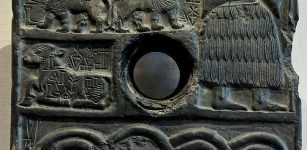 Babylonian Story Of Bird-God Anzu ‘The Wise One’ And His Underworld Realm
Featured Stories | Dec 10, 2016
Babylonian Story Of Bird-God Anzu ‘The Wise One’ And His Underworld Realm
Featured Stories | Dec 10, 2016 -
 3,000-year-old knight discovered at the Palidli necropolis
Civilizations | Aug 22, 2015
3,000-year-old knight discovered at the Palidli necropolis
Civilizations | Aug 22, 2015 -
 How Did Ancient Romans Grow Their Gardens?
Ancient History Facts | May 25, 2018
How Did Ancient Romans Grow Their Gardens?
Ancient History Facts | May 25, 2018 -
 Mysterious 2,000-Year-Old Disco Colgante – Unknown High-Tech Device, Representation Of A Spiral Galaxy Or Something Else?
Artifacts | Nov 20, 2020
Mysterious 2,000-Year-Old Disco Colgante – Unknown High-Tech Device, Representation Of A Spiral Galaxy Or Something Else?
Artifacts | Nov 20, 2020 -
 The Chinese Nostradamus And His Striking Predictions
Featured Stories | Sep 15, 2018
The Chinese Nostradamus And His Striking Predictions
Featured Stories | Sep 15, 2018 -
 Long-Lost Island Documented On Ancient Maps – Erased From History Or Misidentified?
Featured Stories | Dec 14, 2019
Long-Lost Island Documented On Ancient Maps – Erased From History Or Misidentified?
Featured Stories | Dec 14, 2019 -
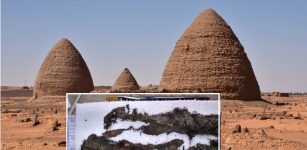 People Of Old Dongola Recycled And Dyed Clothes
Archaeology | Jan 24, 2024
People Of Old Dongola Recycled And Dyed Clothes
Archaeology | Jan 24, 2024 -
 Aboriginal Australians Were World’s First Astronomers Who Discovered Variable Stars – Astrophysicist Says
Archaeology | Jul 16, 2019
Aboriginal Australians Were World’s First Astronomers Who Discovered Variable Stars – Astrophysicist Says
Archaeology | Jul 16, 2019 -
 On This Day In History: Battle Of Vincennes, Indiana – On Feb 24-25, 1779
News | Feb 24, 2017
On This Day In History: Battle Of Vincennes, Indiana – On Feb 24-25, 1779
News | Feb 24, 2017 -
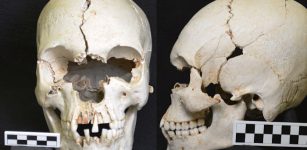 Rare Ancient Caribbean Skull Shows Evidence Of Leprosy
Archaeology | Nov 29, 2021
Rare Ancient Caribbean Skull Shows Evidence Of Leprosy
Archaeology | Nov 29, 2021 -
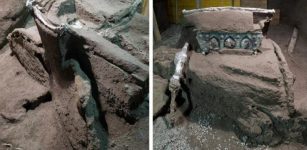 Extraordinary Ancient Roman Ceremonial Chariot Discovered In Pompeii – It’s Still Almost Intact
Archaeology | Mar 1, 2021
Extraordinary Ancient Roman Ceremonial Chariot Discovered In Pompeii – It’s Still Almost Intact
Archaeology | Mar 1, 2021 -
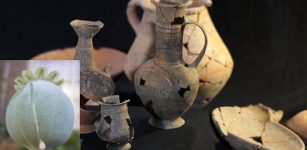 Opium Residue Discovered In 3,500-Year-Old Pottery Offers Evidence The Drug Was Used In Ancient Burial Rituals
Archaeology | Sep 20, 2022
Opium Residue Discovered In 3,500-Year-Old Pottery Offers Evidence The Drug Was Used In Ancient Burial Rituals
Archaeology | Sep 20, 2022 -
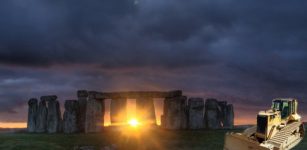 Can Stonehenge Be Saved From Bulldozers Or Have Druids Been Defeated?
News | Nov 10, 2020
Can Stonehenge Be Saved From Bulldozers Or Have Druids Been Defeated?
News | Nov 10, 2020 -
 Humans Spread The Black Death – Not Rats – Scientists Say
Archaeology | Feb 7, 2018
Humans Spread The Black Death – Not Rats – Scientists Say
Archaeology | Feb 7, 2018 -
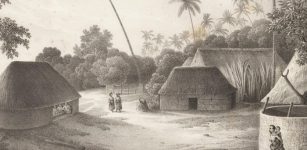 Impact Of European Contact With Pacific Islands Was Devastating – New Study Reveals
Archaeology | Sep 30, 2022
Impact Of European Contact With Pacific Islands Was Devastating – New Study Reveals
Archaeology | Sep 30, 2022 -
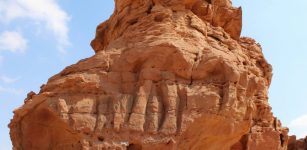 Unique Life-Sized Camel Carvings In Northern Arabia Are Much Older Than Previously Thought
Archaeology | Sep 15, 2021
Unique Life-Sized Camel Carvings In Northern Arabia Are Much Older Than Previously Thought
Archaeology | Sep 15, 2021 -
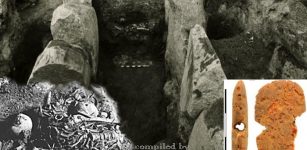 Renewed Excavations Of Unique More Than 5,000-Year-Old Megalithic Tomb Found In Poland
Archaeology | Dec 28, 2017
Renewed Excavations Of Unique More Than 5,000-Year-Old Megalithic Tomb Found In Poland
Archaeology | Dec 28, 2017




